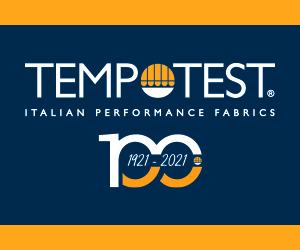Tessile Di Nole Specializes in Velvets, Streamlines Production Ferrari Emphasizes Automated Equipment to be Competitive
November 25, 2014
NOLE, Turin, IT—“Many customers look for price alone and that’s what makes the market so difficult,” says Luca Ferrari, owner of Manifattura Tessile Di Nole, the Italian velvet producer with 7,911 custom colors to its credit.
“Every mill has to specialize in something in order to survive. This is no time to produce average products. You need to have quality, delivery, service, exclusivity with a worldwide base of customers.”
“Quality means service and exclusivity,” he points out. One must look at who will remain in business. If you look only in terms of today, you can repeat the mistakes of the past.” His mother used to tell him that if he sells nice fabrics, you’ll meet nice people,” Ferrari laughs. He started with Nole in 1991 after his father bought the company in 1974. The mill started in 1913.
Nole has been present at Intertextile in Shanghai for two years and the company is finding high-end wholesalers in China who want European goods. “Nole makes upholstery but it can also be used for decorative fabrics. China and the USA are Nole’s two growth markets, Ferrari says.
Ferrari says that German customers look at the balance sheet of their suppliers. “The Germans want continuity. They’re investing in a collection and they want it to last. Nole only sells to editeurs and not to furniture manufacturers or retail shops,” Ferrari says.
Nole buys yarns for yarn dyed and piece dyed fabrics. It does its own warping and dyeing. Nole invested in a yarn-changing machine, robotized its color kitchen and robotic warping as well as automated packing equipment in order to reduce overhead.
“The customers can look at our website now see goods in production and exact delivery date within 24 hours after order placement.”
The range of the Nole line is 18 Euros to 110 Euros in cotton and viscose and cashmere, linen and silk at the high end. “Plain velvet goes on forever. Currently, textured velvet and embossing is the fashion.”
“China is king of the bottom end of the velvet market,” Ferrari says. “The Chinese still use formaldehyde in their fabrics.”
Ferrari says that many mills use to be weaver in Italy but now import fabrics.
















